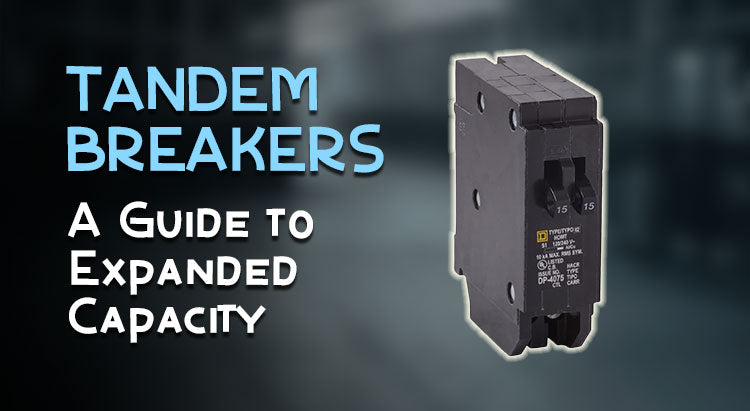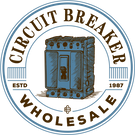Tandem Breakers Demystified: Expanding Circuit Options

Are you facing electrical capacity challenges in your home or building? If so, the solution might lie in utilizing tandem breakers to meet your increased power demands.
However, it's crucial to understand their installation, compatibility, benefits, and why they might be preferable compared to other breaker options.
This comprehensive guide will ensure that these powerful components serve your needs effectively without causing any issues.
What is a Tandem Breaker?
Tandem breakers, often referred to as "cheater" breakers due to their dual-circuit design, are easily distinguishable.
These breakers are designed to fit into a single circuit breaker slot, accommodating two narrow breakers side by side.
They come with various prefixes such as double, duplex, slimline, and more.
Tandem breakers are the go-to solution when your electrical panel is fully occupied, offering a means to expand its capacity.

A Closer Look at Functionality
A standard two-pole circuit breaker connects to a panelboard through two poles, disconnecting both simultaneously.
In contrast, tandem breakers lack this simultaneous disconnection feature. This distinction is vital when considering their safe and appropriate usage.
Why Choose Tandem Breakers?
Tandem breakers offer several advantages that make them a preferred choice over other breaker options:
- Space Efficiency: When your electrical panel has limited space, tandem breakers allow you to double the number of circuits without requiring additional panel space. This can be especially beneficial in older homes or buildings with limited electrical infrastructure.
- Cost-Effective Solution: Installing a new panelboard with more slots can be expensive and time-consuming. Tandem breakers provide a cost-effective alternative, allowing you to increase capacity without the need for extensive upgrades.
- Flexibility: Tandem breakers are versatile. You can choose to install them only in the circuits that require extra capacity, leaving the remaining slots available for larger appliances or higher-demand circuits.
- Panelboard Compatibility: In cases where your current panelboard cannot accommodate full-sized breakers due to space constraints, tandem breakers offer a viable solution. They fit into the same space as a single full-sized breaker, expanding your panel's capabilities without requiring a larger panel.
Ensuring Safety
The term "cheater" might raise concerns about the safety of using tandem circuit breakers. However, these concerns are unfounded if you adhere to proper installation guidelines.
Reputable brands like GE and Square D manufacture tandem breakers, indicating their safety and compliance with industry standards.
To guarantee safety, ensure that your panelboard is designed to accommodate tandem breakers and follow correct installation procedures.
Determining Panelboard Compatibility
Before incorporating tandem breakers into your electrical system, it's essential to determine whether your panelboard can accommodate them. Here's how you can assess compatibility:
- Check the Model Number: Locate the model number of your panelboard, typically found in the first four digits. This number provides insight into the panel's capacity and whether tandem breakers are permissible. For example, a model like G3040BL1200 suggests a 30-space panel capable of supporting 40 circuits, indicating tandem breaker compatibility.
- Refer to the Panel Diagram: If the model number isn't readily available, consult the panel diagram. This visual guide illustrates the allowable breaker placements. Slots that support tandem breakers will have a single line inside. Some diagrams might include a key for clarity, helping you identify which slots are suitable for tandem breakers.
Optimizing Tandem Breaker Usage
Whether you opt for GE tandem breakers, Square D tandem breakers, or alternatives, maximizing their benefits requires proper usage.
These breakers provide a cost-effective way to enhance your panel's capacity.
However, installing tandem breakers where they are not supported can lead to safety hazards and potential fire risks.
In cases where improper tandem breaker usage is identified, the ideal approach is to replace the entire panelboard. This proactive step avoids future issues arising from the potential damage these unsuitable breakers may have caused
Tandem breakers offer an efficient solution to overcome electrical capacity challenges.
By understanding their functionality, ensuring panelboard compatibility, and following proper installation procedures, you can harness their benefits safely and effectively.
Remember, safety should always be a top priority in electrical upgrades.
Embrace tandem breakers where they belong, and you'll empower your electrical system for improved performance.
FAQs About Tandem Breakers
Are tandem circuit breakers legal?
Yes, tandem circuit breakers are legal and safe to use, provided they are installed according to manufacturer guidelines and in panels designed to accommodate them.
Are tandem breakers a good idea?
Tandem breakers can be a good idea when you need to increase the capacity of your electrical panel without extensive upgrades. They are cost-effective and space-efficient solutions.
What is a tandem breaker?
A tandem breaker is a type of circuit breaker that fits into a single slot in an electrical panel but provides two separate circuits. They're used to expand circuit capacity in limited spaces.
What is the difference between a twin breaker and a tandem breaker?
A twin breaker and a tandem breaker are terms used interchangeably to describe the same type of breaker: one that allows for two circuits in a single slot.
How do I know if my panel allows tandem breakers?
A: Check your panel's model number or refer to its diagram. The model number's first digits and the presence of a single line in the slot in the diagram indicate tandem breaker compatibility.




